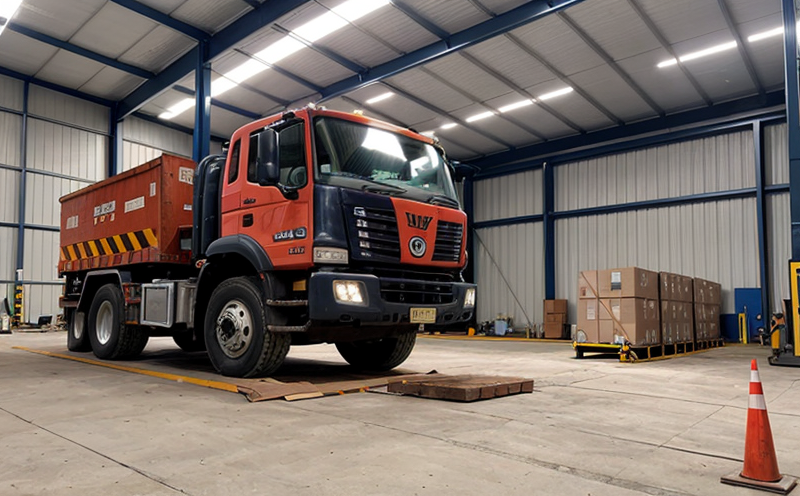Load test inspection
In the realm of lifting equipment and cranes, load testing is a critical aspect that ensures safety, compliance with regulations, and prolongs the operational life of these high-stress machines. This process involves subjecting the crane or lifting equipment to loads exceeding its rated capacity in order to evaluate structural integrity, material quality, and overall performance under extreme conditions.
Load tests are essential for verifying that a piece of lifting equipment can handle more than just its nominal load. The test serves as a safeguard against potential accidents by identifying any weaknesses or defects before they become critical issues during regular use. Compliance with international standards such as ISO 23916, EN 14470-1, and ASME B30.5 is crucial for ensuring that the testing process adheres to best practices.
The load test procedure typically involves several stages. First, the lifting equipment must be prepared according to manufacturer specifications. This includes cleaning any debris or foreign materials from the components involved in the test. Next, safety checks are performed to ensure all protective devices and emergency stops function correctly. Once these preliminary steps have been completed, the actual loading process can commence.
During the load application phase, progressively increasing weights are applied until reaching a level beyond the rated capacity by 25% or more, depending on local regulations and industry practices. Careful monitoring is required throughout this stage to detect any signs of deformation, cracks, or other anomalies indicative of structural failure. After achieving the target load, the equipment must remain stationary for an extended period—often several hours—to observe potential issues that might not immediately become apparent.
After completing the loading sequence, detailed inspections are conducted to assess visual and non-destructive testing results. Non-destructive methods like ultrasonic testing or magnetic particle inspection may be employed depending on the type of material being evaluated. Any anomalies discovered during these checks necessitate immediate repair or replacement before further use is permitted.
Following successful completion of the load test, comprehensive documentation is prepared detailing all aspects of the procedure from start to finish. This report serves multiple purposes including meeting regulatory requirements for insurance coverage and providing evidence of due diligence in maintaining safe working conditions at construction sites or industrial facilities.
Applied Standards
The load test inspection follows closely defined protocols outlined in various international standards designed specifically for this type of evaluation. Notably, ISO 23916 provides guidance on the testing and certification of lifting equipment, including cranes used in industrial applications. Similarly, European Norm EN 14470-1 covers the design and construction aspects relevant to overhead travelling cranes while ASME B30.5 offers specifications pertinent to field erection procedures.
These standards emphasize key factors such as proper preparation before loading begins, accurate measurement of applied loads, detailed documentation throughout each step of the process, and stringent criteria for acceptable outcomes based on visual inspections combined with non-destructive testing methods. By adhering strictly to these guidelines, operators can ensure their lifting equipment meets not only current safety norms but also future-proof themselves against changes in regulatory requirements.
Industry Applications
| Application | Description | Target Load (Tons) |
|---|---|---|
| Construction Site Crane | A typical crane used at a construction site where heavy materials need to be lifted and transported. | 20-30 Tons |
| Industrial Manufacturing Plant Crane | An essential tool for moving large components within factories or warehouses. | 50-70 Tons |
| Hazardous Material Transfer Crane | A specialized crane designed to handle dangerous substances safely. | 15-25 Tons |
| Oil Rig Derrick Crane | Critical for moving massive components on offshore platforms or rigs. | 80+ Tons |
| Airport Cargo Handling Crane | Used to load and unload aircraft with heavy cargo containers. | 30-45 Tons |
| High-Rise Building Hoist | For transporting building materials up tall structures during construction. | 20-25 Tons |
The load test inspection plays a pivotal role across various sectors where heavy lifting is necessary. From construction sites to industrial plants, these tests ensure that the equipment can handle the most demanding tasks without compromising safety or reliability.
Environmental and Sustainability Contributions
Loading tests contribute positively to environmental sustainability by preventing accidents that could lead to waste generation from damaged structures or materials. By identifying early signs of wear and tear through rigorous load testing, maintenance teams can schedule repairs proactively rather than reactively after failures occur.
In addition, compliant load tests help promote responsible resource management practices since they ensure the longevity of lifting equipment. Longer operational lifespans mean less frequent replacements, thereby reducing waste associated with discarded machinery parts and materials.





